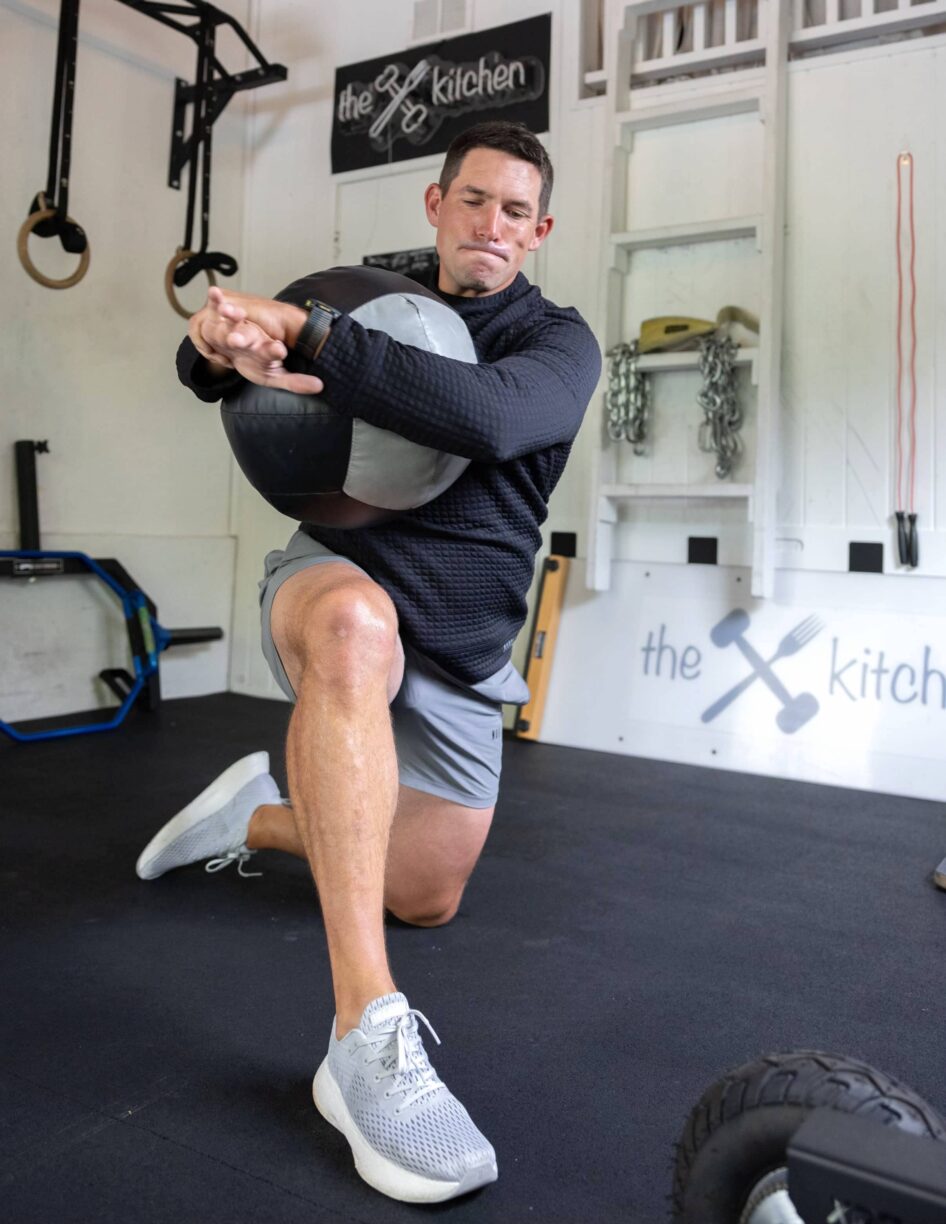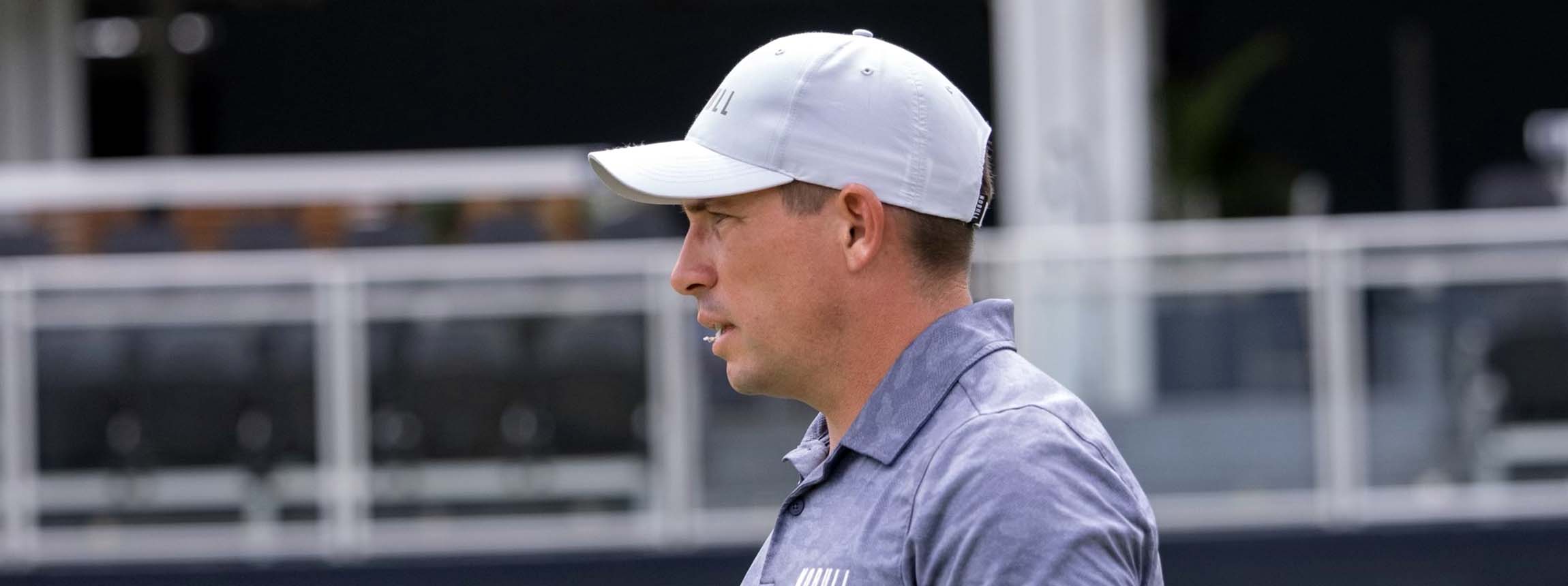Earlier this year, Garmin launched the Approach® S70 golf smartwatch, combining premium golf features with a full suite of advanced health and fitness activity profiles.
Perhaps nobody on the PGA Tour can better illustrate the need for both than Scott Stallings. In 2016 Scott underwent a major health transformation, dropping nearly 60 pounds from his then 235-pound frame as he adjusted to becoming a different kind of golfer.
Since that time, he and his team have been extremely diligent about searching for the perfect training regimen and using health and wellness data to help him perform at a high level both on and off the course.
We caught up with Scott, who is a Garmin-sponsored athlete, during a week off from competition as he looks to refocus for the end of the 2023 tour season.
As a 13-year veteran of the tour, how do you personally measure success?
SS: It’s a unique sport, because if you solely base your success off wins and losses, you fail a lot more than you succeed. A lot of it has to do with asking — do I still love it?
Do I still want to continue to improve? Is it something I constantly think about, trying to figure out ways to get better? If the answer is yes, then (you want to) put your best foot forward and put yourself in a spot to go out there and compete against the best in the world.
Especially when the average age on tour is getting younger and younger, guys are coming out more prepared — more hungry — so every little piece that you can do to improve goes a long way. Health, wellness and fitness components are a huge part of that.
You’ve really taken a modern approach to using fitness analytics. What numbers do you pay attention to when trying to achieve peak performance?
SS: HRV and sleep performance are the two biggest, but all fitness analytics are very indicative of what your body has gone through. Pretty much every Monday after an event, my sleep isn’t very good, my HRV is low and my body’s process of coming down (after an event) brings everything else down.
If I didn’t know what went into that, it would be a moment to freak out. You need to have an understanding of what affects the numbers, and that it’s all relevant to who you are. You strive to be able to put the hammer down (at tournaments) but also understand that comes at a cost.
Having a way to use data to understand the cost/benefit of how you train and how you practice is a huge benefit for me. I have found more information in the first few months of being with the Garmin family than in my first 13 years on tour.
In the last couple of months, I’ve done things differently than I ever have — and for the better. I got back from being in Europe for almost a month and I’m fully adjusted, and I’ve been back in Tennessee for less than 36 hours.
My sleep number is falling back in, and my HRV is back to normal or above-average ranges. That’s from using the Jet Lag Advisor to help prepare and understand what my body is going through.
What is the most difficult part for you about maintaining your top fitness levels throughout the year?
SS: It’s well-documented that throughout my career allergy season has been by far the worst time for me. I had major sinus surgery in 2015 and while it dramatically impacted my body for good, it still affects me, and I live in a horrible place for it (Tennessee).
We’ve been doing some stuff with Garmin to manage that, utilizing application programming interfaces and understanding the causes and why there are these weird lags during the season where I can’t seem to get out of first gear. Between my doctor and (my training team), we’ve tried to preempt that by figuring out what causes it.
(Managing) my allergies and understanding how my travel affects me is something that may seem silly, but when you travel (close to) 300 days a year, rarely sleep in your own bed and play a sport that requires fine motor skills, it’s amazing how much that can affect your game. Being aware of it and knowing what to do to preempt it and head it off so you don’t have to deal with it as long as I have.
Which Garmin products have you been using, and which ones do you like the best?
SS: My introduction to Garmin was wearing the Enduro™ smartwatch so that’s been my bread and butter.
When I play on tour, I can’t utilize any kind of golf watch or rangefinder. But we’ve tested both when I’ve been off with my caddie. We played North Berwick and Gullane while I was in Scotland. It was crazy.
We played Gullane without rangefinders, so one group had my S70, and I used the golf function and when we got done, we were impressed. Honestly, that’s how we figured out if can you hit a driver or if you can’t hit a driver on certain holes or how to play different hazards.
As a PGA Tour player, I can say that there is a benefit to using the S70, especially on courses that we don’t get to see very often. I don’t know why an amateur player wouldn’t want to use it.
It (the S70) gives you something that can keep track of (your clubs) and help quantify what you do and make better decisions, both on and off the course. And it gives you a picture of what it all looks like when you put your best foot forward and tee it up.
What was the main inspiration for losing nearly 70 pounds a few years back, and how did that change you as a golfer?

SS: My golf was not my priority with that; it was more about being healthier. I figured if I took care of myself, all that stuff would sort of fall in line.
In some ways, I feel like I got a second chance in my career. To be honest, once you make a drastic change like that, you learn how to train one way and it becomes ingrained in you.
I was not very strong after losing the weight. I was kind of a mash and thrower as far as the way I swung and slung my body into it. I had to figure out how to move a little differently.
I got (my weight) down into the 170s, and that was just way too low for me. So I had to learn how to lift; I started picking the brain of people who were much better than me, and they helped me understand how to balance weight training in season and how to set up a training program that works with a tour schedule.
What are your goals for the rest of the year?
SS: I’m exempt into next season (2024), so I’ll be able to put myself into contention and shake myself out of a little bit of a rough spell that I’ve been in lately, where I’ve played a little suspect.
(I want to) improve incrementally throughout the year, rather than feeling that week in, week out, I’m starting over. (I want to) build some momentum when we head into January.
With the wild world of professional golf right now, you need to be prepared for anything, because everything could change in a second. So I want to be resilient and make sure I’m buttoned up with my game and my training.
